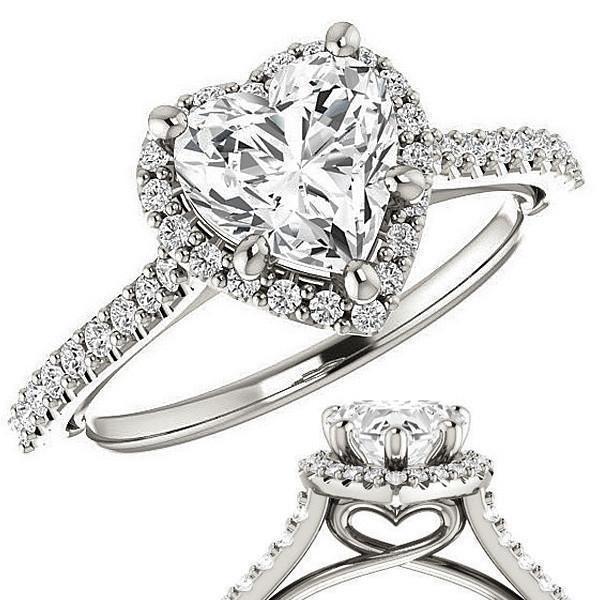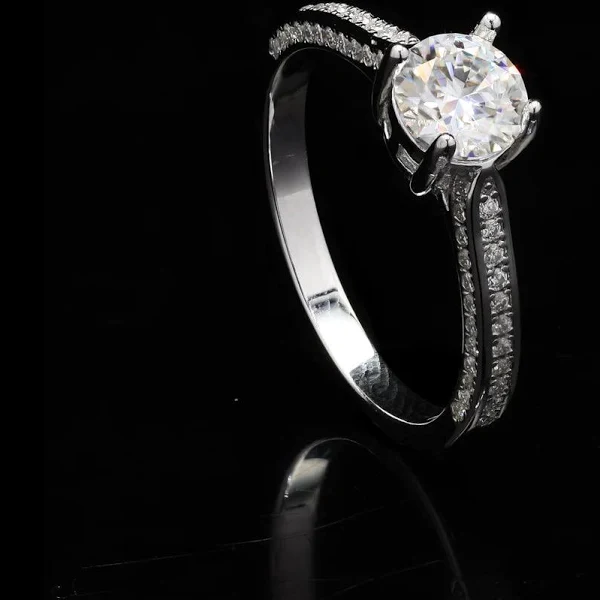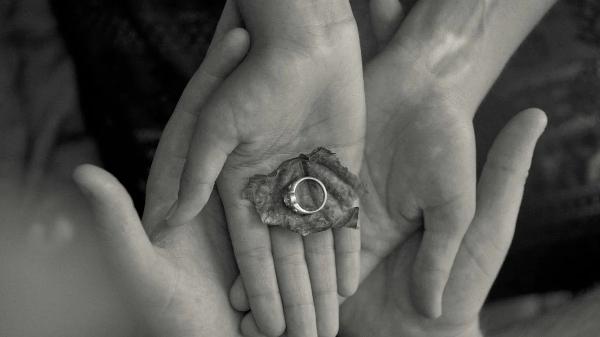 Blog Speed Optimization – Make Google & Users Happy!
Blog Speed Optimization – Make Google & Users Happy!
Which Hand Does the Engagement Ring Go On?
Written by chetna » Updated on: June 17th, 2025

The engagement ring is a symbol of love, commitment, and promise, but its placement can vary based on tradition, culture, and personal preference. The question "Which hand does the engagement ring go on?" is more than a matter of fashion; it reflects deep-rooted customs and evolving practices. This comprehensive guide will explore the traditional and cultural practices surrounding the placement of engagement rings and how modern preferences are reshaping these norms.
Traditional Practices
The Left Hand Tradition
Traditionally, in many Western cultures, the engagement ring is worn on the left hand, specifically on the fourth finger, known as the "ring finger." This practice has its origins in ancient beliefs. The Romans were among the first to suggest that the fourth finger on the left hand had a direct vein—called the "vena amoris" or "vein of love"—that was thought to run directly to the heart. Although modern anatomy disproves this belief, the tradition endured and became standard practice in many Western countries.
The left-hand tradition became more widely accepted in the 19th century, particularly following the widespread popularity of diamond engagement rings. Advertising campaigns, most notably by De Beers, reinforced the notion that the left hand was the traditional and proper place for an engagement ring. This helped solidify the practice and make it a common cultural norm.
Cultural Variations
Western Countries
In countries such as the United States, Canada, and much of Europe, the engagement ring is traditionally worn on the left hand. This practice aligns with historical beliefs and has become a well-established custom. The left hand is viewed as the "correct" choice for engagement rings in these cultures, reinforcing its place in engagement traditions.
Scandinavian Countries
In Scandinavian countries like Sweden, Norway, and Denmark, the custom is somewhat different. In these regions, it is customary for both partners to wear engagement rings on their left hands. This practice underscores a broader cultural acceptance of shared commitment and gender equality in relationships. Men’s engagement rings are also a common feature in these countries, signifying a mutual promise between partners.
Other Cultures
In many other parts of the world, the right hand is traditionally used for engagement rings. For example, in Russia, Greece, and India, it is customary to wear the engagement ring on the right hand. This variation in tradition reflects different cultural norms and practices. In these cultures, the right hand is considered more appropriate for engagement jewelry, and this practice continues to be prevalent.
Modern Practices
Shifting Norms
In contemporary society, there is growing flexibility regarding which hand the engagement ring should go on. The rigidity of traditional practices is being challenged by evolving gender norms and personal preferences. Many couples today choose to wear their engagement rings on the hand that feels most comfortable or meaningful to them, rather than strictly following historical conventions.
This shift reflects broader societal changes where individual choice and personal expression are valued. As gender roles become more fluid and traditional practices are re-evaluated, the placement of the engagement ring is increasingly seen as a personal decision rather than a fixed tradition.
Customization and Personalization
Modern trends in jewelry design have also influenced the choice of which hand to wear the engagement ring on. The rise of customizable and personalized engagement rings allows couples to choose designs that best reflect their unique styles and preferences. This includes decisions about which hand to wear the ring on, based on comfort, aesthetics, or personal significance.
Custom-designed engagement rings can range from classic metal bands to intricate designs featuring gemstones or personalized engravings. This level of customization ensures that the engagement ring is not only a symbol of love but also a reflection of the couple’s individual tastes and values.
Practical Considerations
Comfort and Convenience
When deciding "Which hand does the engagement ring go on?" practical considerations such as comfort and convenience play a significant role. Some individuals may find it more practical to wear the ring on their dominant hand or on a hand that is less exposed to daily wear and tear. This approach helps maintain the ring’s condition and ensures that it remains comfortable for everyday use.
For those who use their hands frequently in their work or daily activities, choosing a hand that minimizes the risk of damage or discomfort can be an important factor. Additionally, personal style and the presence of other jewelry can influence the decision about which hand to wear the engagement ring on.
Symbolic Meaning
Regardless of the hand chosen, the engagement ring remains a powerful symbol of love and commitment. The decision about which hand to wear the ring on should reflect the couple’s values and the significance they attach to the ring. Whether adhering to traditional practices or embracing modern flexibility, the most important aspect is that the ring represents the unique bond between partners.
Conclusion
The question "Which hand does the engagement ring go on?" encompasses a rich tapestry of tradition, culture, and personal choice. While the left hand is traditionally used in many Western cultures, the right hand is also significant in various regions around the world. Modern practices increasingly embrace flexibility and personal preference, allowing couples to choose the hand that best suits their individual needs and values.
Ultimately, the placement of the engagement ring is a deeply personal decision that reflects the couple’s relationship and commitment. Whether following historical traditions or exploring new practices, the engagement ring remains a meaningful symbol of love and partnership, regardless of which hand it adorns.
Note: IndiBlogHub features both user-submitted and editorial content. We do not verify third-party contributions. Read our Disclaimer and Privacy Policyfor details.
Copyright © 2019-2025 IndiBlogHub.com. All rights reserved. Hosted on DigitalOcean for fast, reliable performance.













